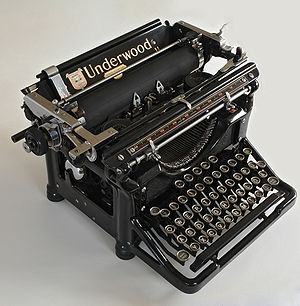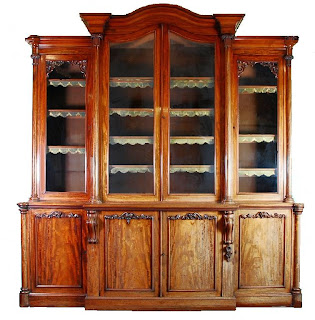 Image via Wikipedia
Image via WikipediaThe familiar sounds of pecking away at the keys of your manual typewriter are indigenous to the way typing used to be. Waiting on the infamous sound of that "ding," you knew the end of your right margin was near. As you move the silver lever and coax a carriage return, your new line appears to begin typing once again.
Two basic categories that all writing machines can be placed in is either "keyboard" or "index." The keyboard category is when a keyboard is used to select the character you want and the key is depressed to print the character. An index typewriter has a chart on which all the characters appear using a pointer or wheel to select the desired character. Manipulation using another lever or mechanism prints the character.
It takes time and patience to extensively research and learn about collecting typewriters. There are hundreds of typewriter brands and thousands of models. Here are seven things to contemplate when searching to begin collecting vintage typewriters:
1. Rarity: Consider the make, model, year, use of materials and any other unique facets that create a rare vintage collectible.
2. Condition: Most vintage pieces will probably need some type of restoration. Investigate your potential collectible to estimate the amount of repair work needed and filter in estimated costs that would get it back in satisfactory working condition.
3. Type of mechanism: The operational makeup of the typewriter.
4. Exquisiteness of the design: The beauty of the typewriter. This includes style and other decorative elements like bronze and floral accents or mother of pearl inlays.
5. Personal affection of the piece: What draws you to a particular vintage model that makes you desire to buy it.
6. Join a collectors association: Search to see if there are any local clubs or organizations in your area. You may find that typewriter manufacturing companies could give you some leads on your inquiry.
7. Contact other collectors: You can check out some online collector's websites for information on buying or selling vintage typewriters.
There are relatively few collectors, so you will find that the prices on early typewriters are not fixed. Vintage typewriters may turn up at antique shows, flea markets, attics, garage sales, thrift stores or dilapidated shops carrying second-hand goods. It's a rarity that you will find vintage typewriters in elegant antique shops.
Early typewriters focused on visible distinctions and principal mechanics. Improvements were made in basic design elements, such as the system of linkages from the key to the type. Features maintained "type" alignment. Of course newer designs operated on fewer parts than earlier writing machines. These features made typing faster and easier. Amazingly, typewriters became quieter and more reliable. As typewriters evolved, inventors and manufacturers continued to develop the ultimate writing machine. Although vintage typewriters are not a popular collector's item, they are beginning to gain global attention from writing and engineering enthusiasts, historians and many people interested in collecting rare pieces of writing machine history.
Kym Gordon Moore is a member of the North Carolina Writer’s Network with over twenty six years of corporate and personal writing experience. As a public relations strategist for budget conscious new authors, she coordinates creative marketing packages for her clients. Many of her articles, essays, short stories and poems appeared in a variety of magazines, newspapers, ezines and anthologies. http://www.kymgmoore.com Article Source: http://EzineArticles.com/?expert=Kym_Gordon_Moore |





















